Canfield One.2 Super Enduro
Wheel Size: 29’’
Travel: 190 mm rear / 190 mm front
Geometry Highlights:
- Sizes offered: Medium, Large
- Headtube angle: 62.6°
- Seat tube angle: 75.5°
- Reach: 475 mm (Size Large)
- Chainstay length: 440 mm
Frame Material: Aluminum
Price:
- Frame only: $2,600
- Frame & shock packages: $3,000 to $3,500
- Frame, fork, & shock packages: $4,300 to $4,800
- Complete bikes: $6,300 to $8,000
Blister’s Measured Weight (size Large, full build): 37.2 lb / 16.9 kg
Test Locations: Washington; British Columbia; Crested Butte, Colorado; Green River, Utah
Reviewers:
- David Golay: 6’, 175 lbs / 183 cm, 77.9 kg
- Dylan Wood: 5’10.5’’, 155 lbs / 179 cm, 70 kg
Test Duration: 4.5 months
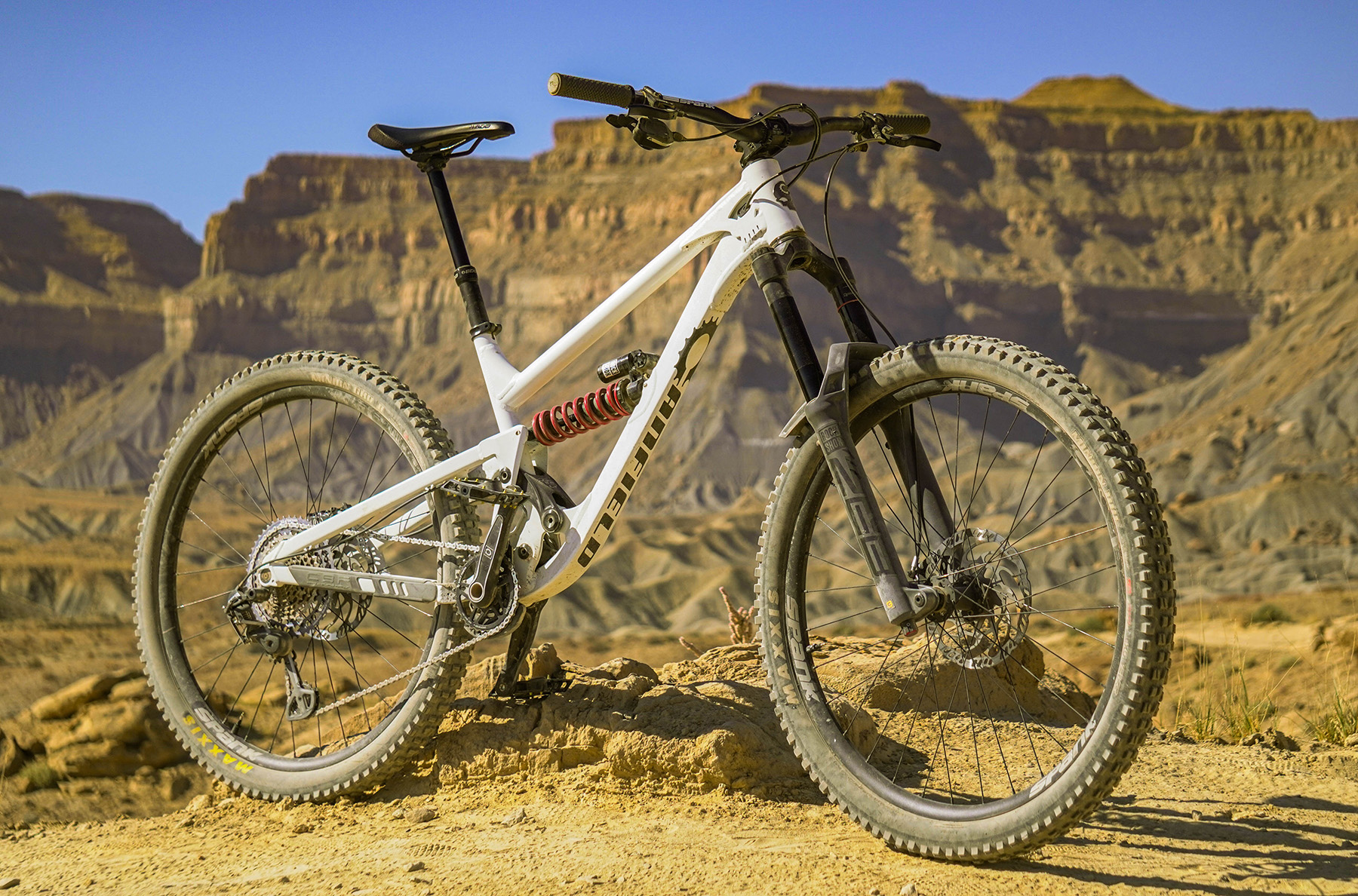
Intro
Canfield initially launched the One.2 as a DH bike a couple of years ago, and then with the launch of the Jedi 29 a little while later, the One.2 occupied the more playful, freeride-oriented slot in Canfield’s gravity lineup. While there’s still a One.2 DH build on offer with 200 mm of travel at both ends, a dual-crown fork, and narrow-range DH drivetrain, Canfield has added a “Super Enduro” option for this year, which drops the suspension travel to 190 mm at each end, subs in a single-crown fork, and adds a wide-range 12-speed drivetrain and a dropper post for the folks who’d like to pedal their One.2 to the top.
The Frame
The One.2 uses Canfield’s typical Canfield Balance Formula (CBF) suspension platform, getting 190 mm of rear travel from a 250 x 70 mm shock in Super Enduro guise; the DH build bumps that up to a full 200 mm by way of a 75 mm stroke shock. As per usual for Canfield, the One.2 is offered in aluminum only. And while it rolls on dual 29’’ wheels, Canfield says the One.2 can be run with dual 27.5’’ wheels or even as a mullet, though, given the lack of geometry adjustment to correct for the changes in wheel size, the latter might get a little wild — more on that below.
The One.2 uses a DH-standard 83 mm bottom bracket shell and a 150 mm hub (which is effectively the same as a 157 mm Super Boost / DH one, just without the extra end cap width to make the axle easier to align). It’s a little surprising that Canfield didn’t go for the more modern 157 mm standard, but given that it’s just a pair of end caps away from converting most 157 mm hubs, the minor oddity doesn’t seem like a big deal. The One.2 frame also uses a straight 49 mm headtube and an IS rear brake mount.

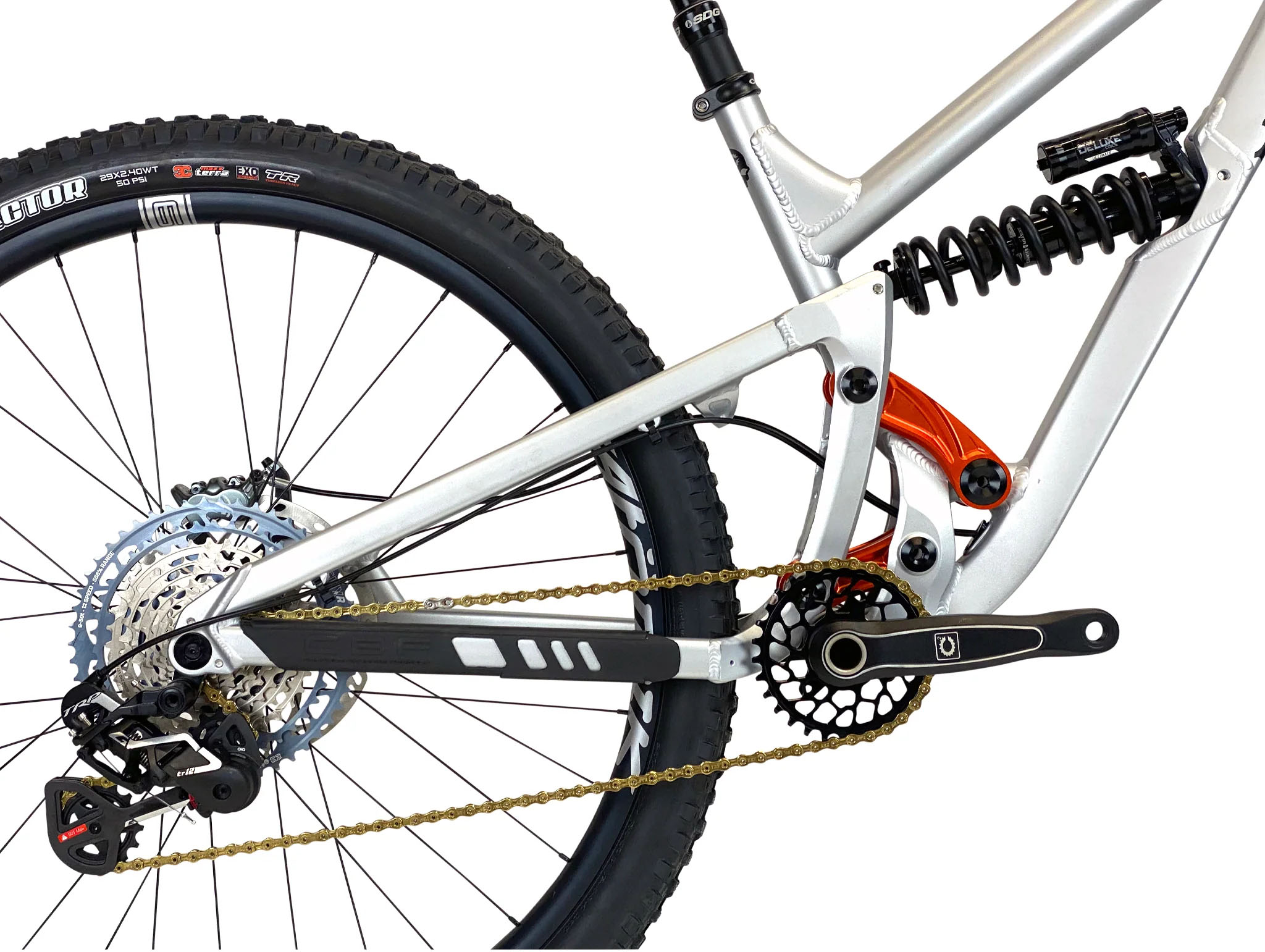
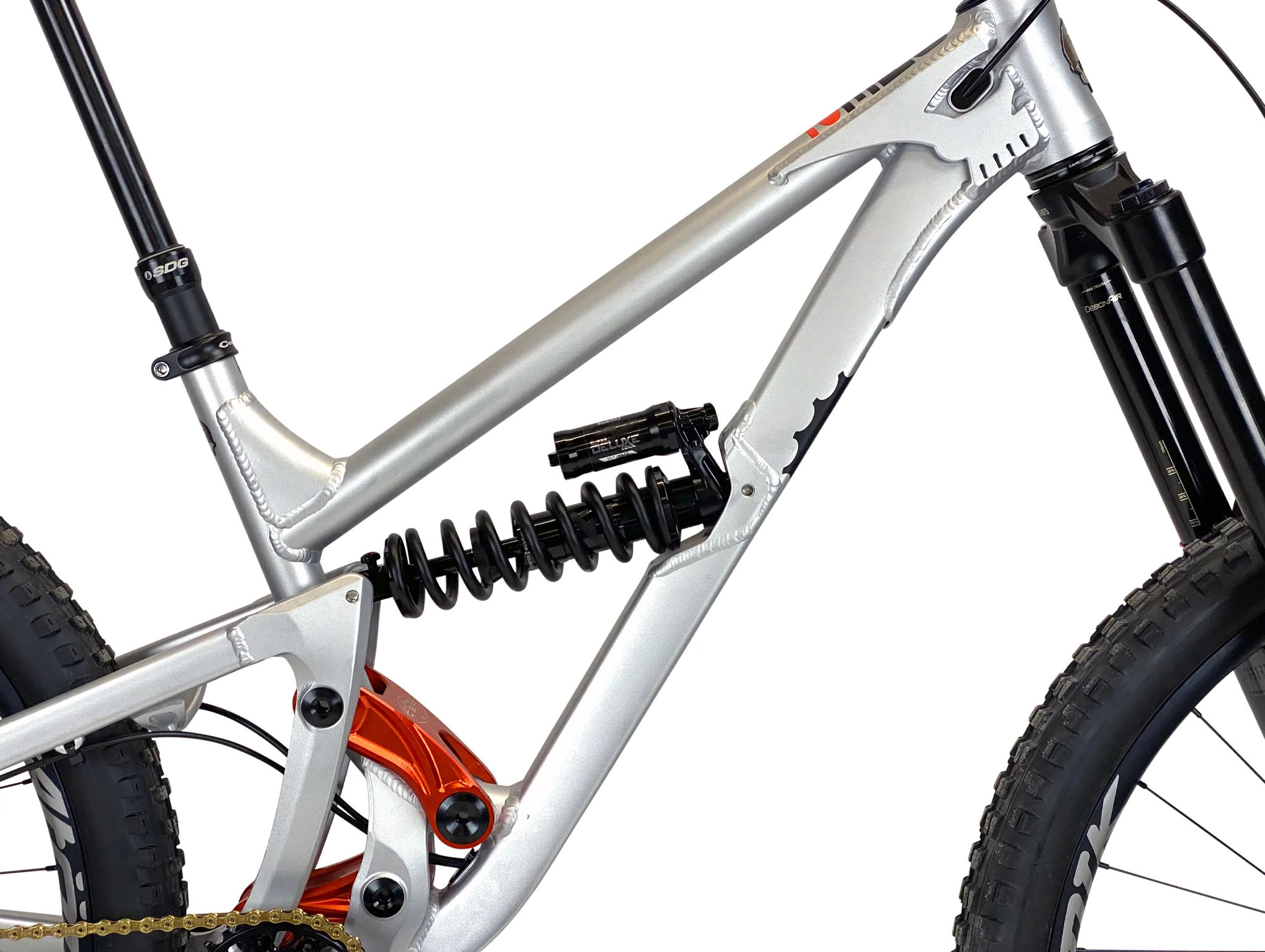

Fit & Geometry
Canfield only offers the One.2 in two sizes, labeled Medium and Large; both get a 62.6° headtube angle and 440 mm chainstays, paired with a 450 and 475 mm reach, respectively. With 22 mm of bottom bracket drop, the One.2’s bottom bracket height is maybe very slightly on the high side for a 190mm-travel 29er, but not by much; with dual 27.5’’ wheels, which Canfield says are compatible, it’d be notably low but not completely off the deep end.
Particularly given that Canfield specs their own short cranks (in your choice of length between 150 and 165 mm), running the One.2 with 27.5’’ wheels (possibly with a 29’’ fork, to keep the front end up) doesn’t sound crazy, especially as a jump-line park bike for riders who want to make it easier to throw around in the air. Mulleting the One.2 seems a bit more ambitious, given the already-slack head angle and tall stack height (since a smaller rear wheel would drop the rear end and rake the bike out further) but Canfield says it’s an option if you want to try.
Though the reach on the One.2 isn’t all that long by modern standards, the effective top tube is relatively roomy, given the not-ultra-steep seat tube. We’ll be curious to see how the pedaling position feels as we spend more time on the One.2, and whether the moderate 75.5° effective / 67.4° actual seat tube angle feels like it limits the One.2’s climbing prowess. Of course, it wasn’t long ago that those angles would have been considered steep, but they’re a bit off modern norms for a big Enduro bike, so it’ll be interesting to see how they feel as we spend more time on the One.2.
Overall, though, the One.2’s numbers look sensible for a bike that’s clearly meant to descend first and foremost, still be able to pedal to the top at least from time to time, and probably be a little more nimble and freeride-oriented than true DH race bikes — which is just how Canfield talks about the One.2.
The Build
Canfield offers one primary Super Enduro build on the One.2, with some options for customization. The base build gets a RockShox ZEB Ultimate and Super Deluxe Ultimate suspension package, TRP TR12 shifter + derailleur with an e.13 Helix cassette, TRP Slate T4 brakes, and Spank Spike Race wheels. The wheels, brakes, and rear shock are upgradeable with a variety of options available for each; check out the Canfield site for the details.
- Drivetrain: TRP TR12 w/ e.13 Helix cassette
- Brakes: TRP Slate T4
- Fork: RockShox ZEB Ultimate
- Shock: RockShox Super Deluxe Ultimate
- Wheels: Spank Spike Race
- Dropper Post: SDG Tellis
Our review bike came as spec’d above, but with Magura MT5 brakes swapped in. At just $50 for that upgrade, we’d call it a very worthwhile one — the base TRP Slate T4 brakes are solid Trail bike brakes, especially for the price, but are well down on power for a 190mm-travel bike like the One.2.
The One.2 Super Enduro build also comes with Maxxis DHF front / Dissector rear tires in MaxxTerra rubber and Exo casings. The impulse to trim weight from what is not exactly a light bike is understandable, but burlier casings would seem to be a more appropriate fit for the intentions of the One.2. Since Canfield ships the bike disassembled, I took the opportunity to fit a Maxxis DHF / DHRII combo in DoubleDown casings right off the bat.
Some Questions / Things We’re Curious About
(1) Given its initial design as a DH / Freeride bike, how well does the One.2 Super Enduro climb?
(2) And what sorts of riders are going to be best served by the One.2 Super Enduro, either as a bike to primarily pedal to the top or perhaps as a shuttle / park bike that can grind up the occasional lap?
Flash Review
Blister Members can read our Flash Review of the One.2 Super Enduro for our initial on-trail impressions. Become a Blister Member now to check out this and all of our Flash Reviews, plus get exclusive deals and discounts on gear, and personalized gear recommendations from us.
FULL REVIEW
With 190 mm of travel front and rear and descent-oriented geometry, there’s no question that the One.2 Super Enduro is designed to go fast downhill and tackle steep and demanding terrain. However, it also has a dropper post and wide-range 12-speed cassette, so this is also a bike that can pedal to the top of rowdy descents, rather than purely relying on lifts and shuttles.
Given its rare combination of traits, we were eager to see how the One.2 Super Enduro balanced them, and what sort of riders ought to be considering it.
Fit and Sizing
Dylan Wood (5’10.5″, 155 lbs / 179 cm, 70 kg): The Canfield One.2 is available in just two sizes, Medium and Large, and we tested the Large for our review. Canfield recommends the Large for folks 5’9″-6’3″ (175-190 cm); being pretty close to the middle of that range at 5’10.5″ (179 cm), I got along with the fit of the Large One.2 very well.
Starting in a seated pedaling position, the Large One.2 feels comfortable, and almost casual. With a somewhat high stack height of 638 mm paired with 40mm-rise Spank bars, my hands did feel pretty high on this bike, and it resulted in a more upright pedaling position than most size Large Enduro bikes I’ve been on. However, the One.2 has a 76º effective seat tube angle, which is more slack than most Enduro bikes. This meant I ended up hunched over the bars to get my weight forward, almost wishing for a less upright pedaling position to begin with. Slamming the seat all the way forward helped a little bit, but on a bike that excels at winch-and-plummet descents, I think a steeper seat tube would be more appropriate.
When going downhill, the size Large One.2’s 475 mm reach offers enough room for me to move about the bike without feeling very stretched out. I’ve found 470-480 mm to be my ideal reach range for the riding around Crested Butte and Gunnison, and the size Large One.2 feels very familiar with its 475 mm reach.
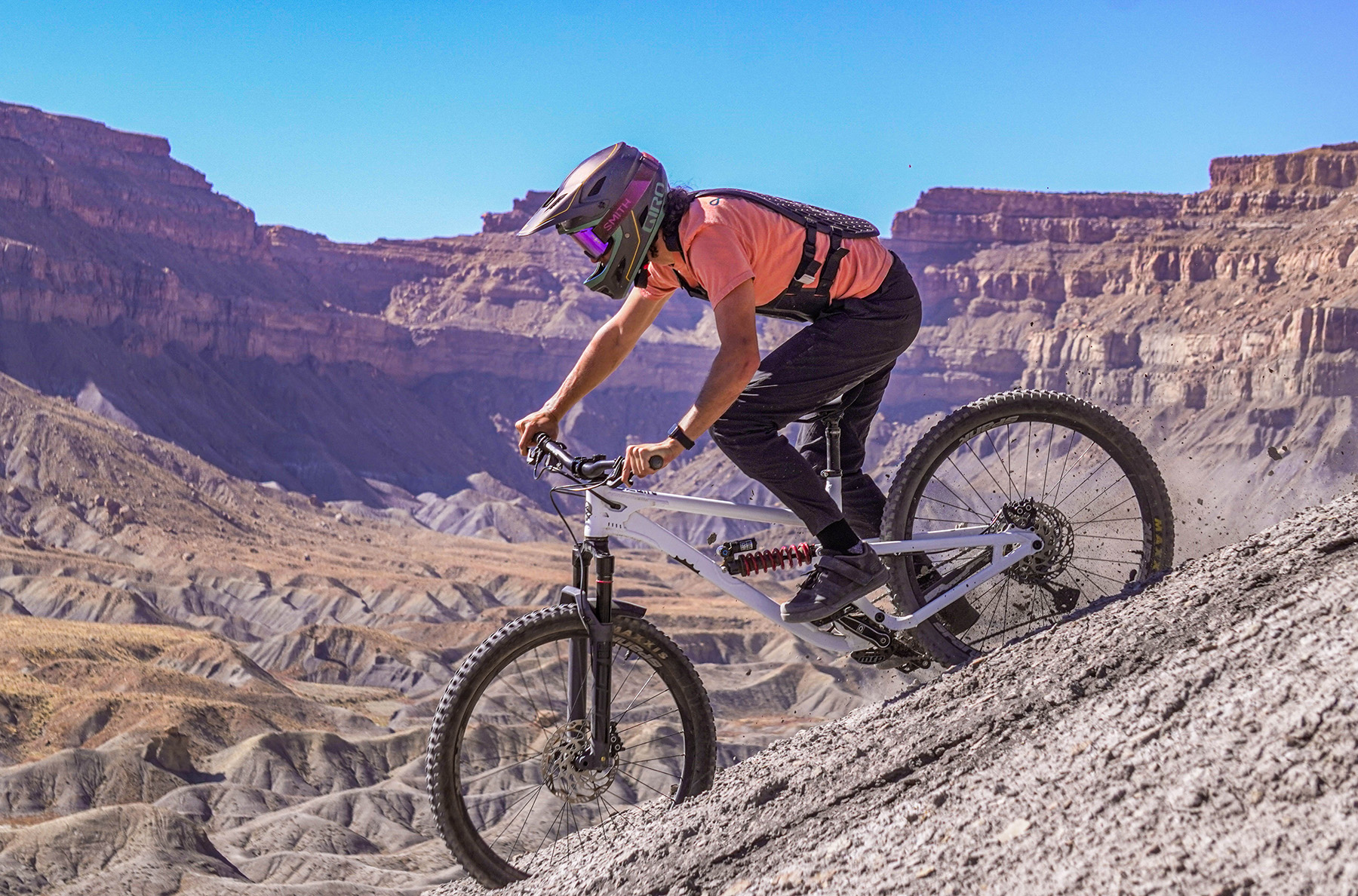
David Golay (6’, 170 lb / 183 cm, 77.1 kg): I’m a little taller than Dylan and often prefer slightly bigger bikes than he does, but I also got along well with the fit of the Large One.2. Its 475 mm reach is on the shorter end of my typical preferred range, but between its tall stack height, roomy effective top tube, and relatively playful demeanor, it feels like a bike where I wouldn’t be quick to size up based on the reach number.
I’ll touch on the seat tube angle in more detail below, but I agree with Dylan that steepening it a little would be welcome. In large part, that would just shorten the effective top tube (i.e., the length of the seated cockpit) and bring that more in line with modern norms relative to the One.2’s not-super-long reach number. I didn’t feel too badly stretched out on the size Large One.2, especially on less steep climbs, but I did need to hunch forward a little more than would be ideal in order to keep the front wheel planted when things really pitched up. Going to a 56 mm lower headset cup (instead of a 49 mm one) to allow the One.2 to run an internal headset with a tapered steerer tube would probably help, too. The 190 mm ZEB fork is actually slightly taller than most ~200mm-travel dual-crown forks, and when you add in the requisite external lower cup, things slacken out a little more (and the front end gets a touch taller as well).
Seatpost insertion on the One.2 is slightly restricted by its interrupted seat tube, but I still had more than enough room to swap in a 200mm-travel PNW Components Rainier (over the stock 170mm-travel SDG post) at my 785 mm seat height, which was welcome for a little extra clearance.
Climbing
Dylan: My expectations for the Canfield One.2 Super Enduro’s climbing performance were quite low coming into this review. After all, it has 190 mm (!) of travel front and rear, plus a suspension platform and geometry layout that’s shared with a dedicated Downhill / Freeride bike. The One.2 Super Enduro is definitely not designed to be a sprightly, quick climber that makes gaining elevation a breeze. But, with all that context in mind, I found myself thoroughly impressed with how well this gravity-oriented steed was able to climb.
Somehow, this isn’t the worst-climbing Enduro bike I’ve ever been on, despite it being the longest-travel bike I’ve ever pedaled uphill for a significant amount of time, mileage, and/or vert. Maybe this shouldn’t be a surprise, given that I’ve found other bikes with the Canfield Balance Formula (CBF) suspension platform to be excellent climbers for how much suspension travel they have. Regardless, this 190mm-travel bike certainly climbs better than it should.
The One.2 offers a lot of traction on the way up, without feeling super inefficient. When seated and pedaling with smooth, well-rounded pedal strokes, little power is lost to the squatting of the rear shock. But when encountering technical and loose climbs, the rear wheel does a great job of staying glued to the trail and providing heaps of traction to tackle these challenging bits.
When trails get very steep, I definitely find myself wishing for a steeper seat tube angle. As I mentioned before, it’s quite hard to get my weight over the front end of this bike when trails get really steep, resulting in a difficult time keeping the front wheel down and adequately weighted. Many steep, fast descending trails in Crested Butte require equally steep climbs to access, so I would really like to see a steeper seat tube angle on this bike.

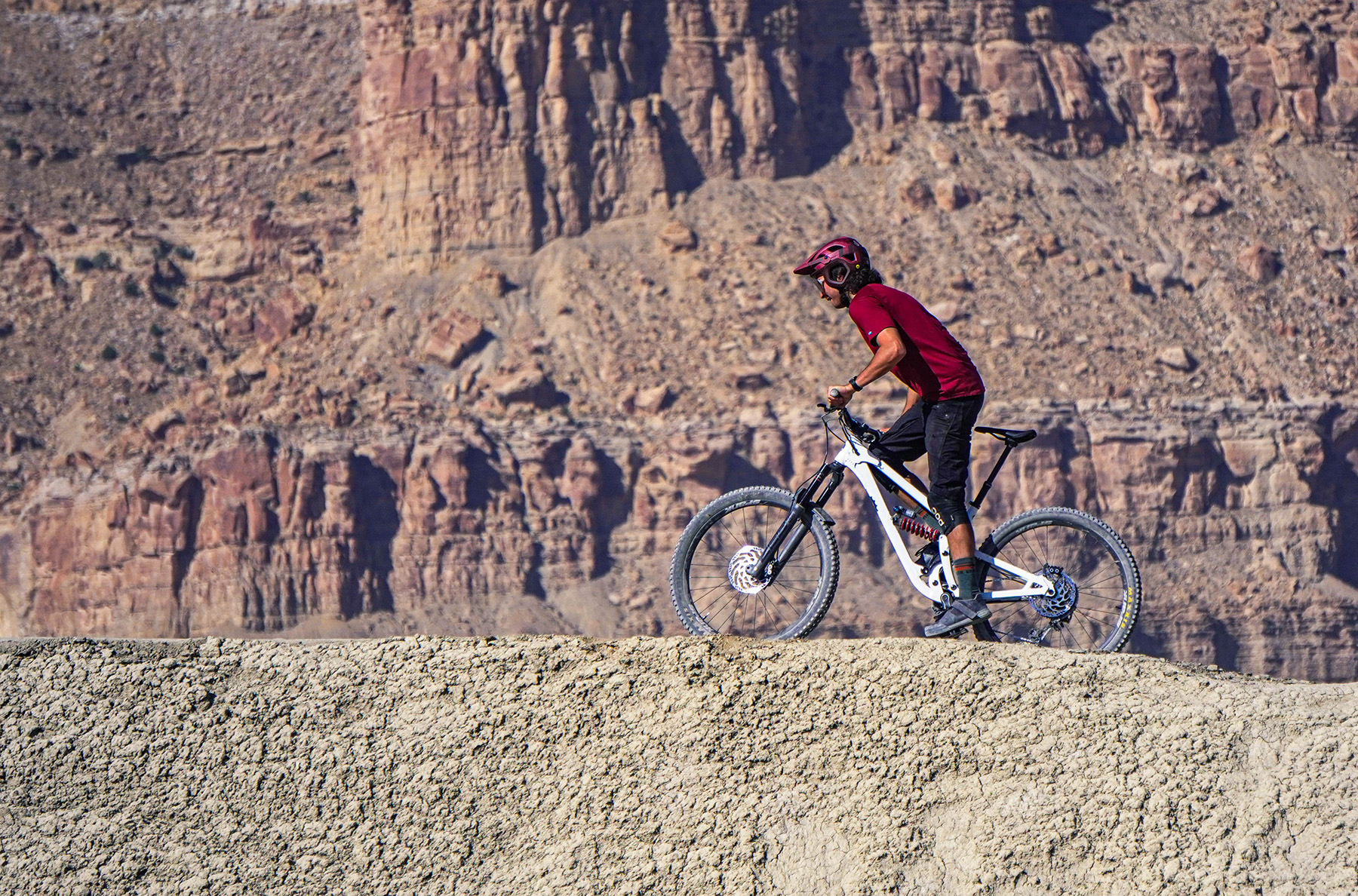
David: Like Dylan, I didn’t have the highest expectations for how well the One.2 would pedal, but it quickly surpassed the bar I’d set in my head. There’s an element of grading on a curve going on here — we’re talking about a 190mm-travel bike without a climb switch (most 250 mm eye-to-eye shocks lack one) — but the One.2 Super Enduro can climb just fine. It’s not super sprightly and energetic feeling on the way up, but if you’re content to sit and spin, the One.2 Super Enduro grinds its way up with relatively little fuss.
The One.2 Super Enduro’s suspension is quite plush off the top and there’s a ton of traction under power, but the One.2’s efficiency isn’t bad at all, so long as you keep a relatively smooth cadence. There’s substantially more bob if your pedal stroke starts to get choppier — that’s one scenario where a climb switch often really helps on long-travel bikes — but I’m still impressed with the One.2’s abilities overall, especially on longer fire road grinds.
When the climbs get more technical, the One.2 Super Enduro still does alright, all things considered, but it’s a long, slack bike and feels like a lot to manage in really tight, ledge-y sections. All that suspension travel also means that the One.2 takes a more exaggerated effort to loft the front wheel at low speeds; it’s also somewhat prone to squatting lower in its travel and putting the pedals into obstacles when you give it a big rearward weight transfer to do so.
But again, the One.2 easily surpassed my expectations for its climbing performance. It wouldn’t be fair to expect it be as efficient as most ~160mm-travel Enduro bikes, and it isn’t, but the gap isn’t all that huge between the One.2 and a number of bikes in that class, either (see our Comparisons section, below). The One.2 would feel like a lot of bike for most folks if we’re talking about everyday Trail-bike usage, but as a park bike that can still climb from time to time, or a bike to access burly winch-and-plummet descents, it’s absolutely up to the task.
Descending
Dylan: Enough with the hoopla, now we’re talking about what’s really relevant to the One.2 Super Enduro. As you’d expect from a bike with the One.2’s travel and geometry stats, the One.2 is a very capable bike on the way down, but it also provides a more Freeride-oriented feel that is more plush and supple than similar bikes that are more geared toward Enduro racing.
The One.2’s suspension feels almost bottomless and is very effective in smoothing out rough sections of trail, providing exceptional traction even when things get very chunky. It has a composed feeling overall, with its very impressive traction under braking (a common theme with the CBF bikes we’ve tested) making the whole deal even sweeter.
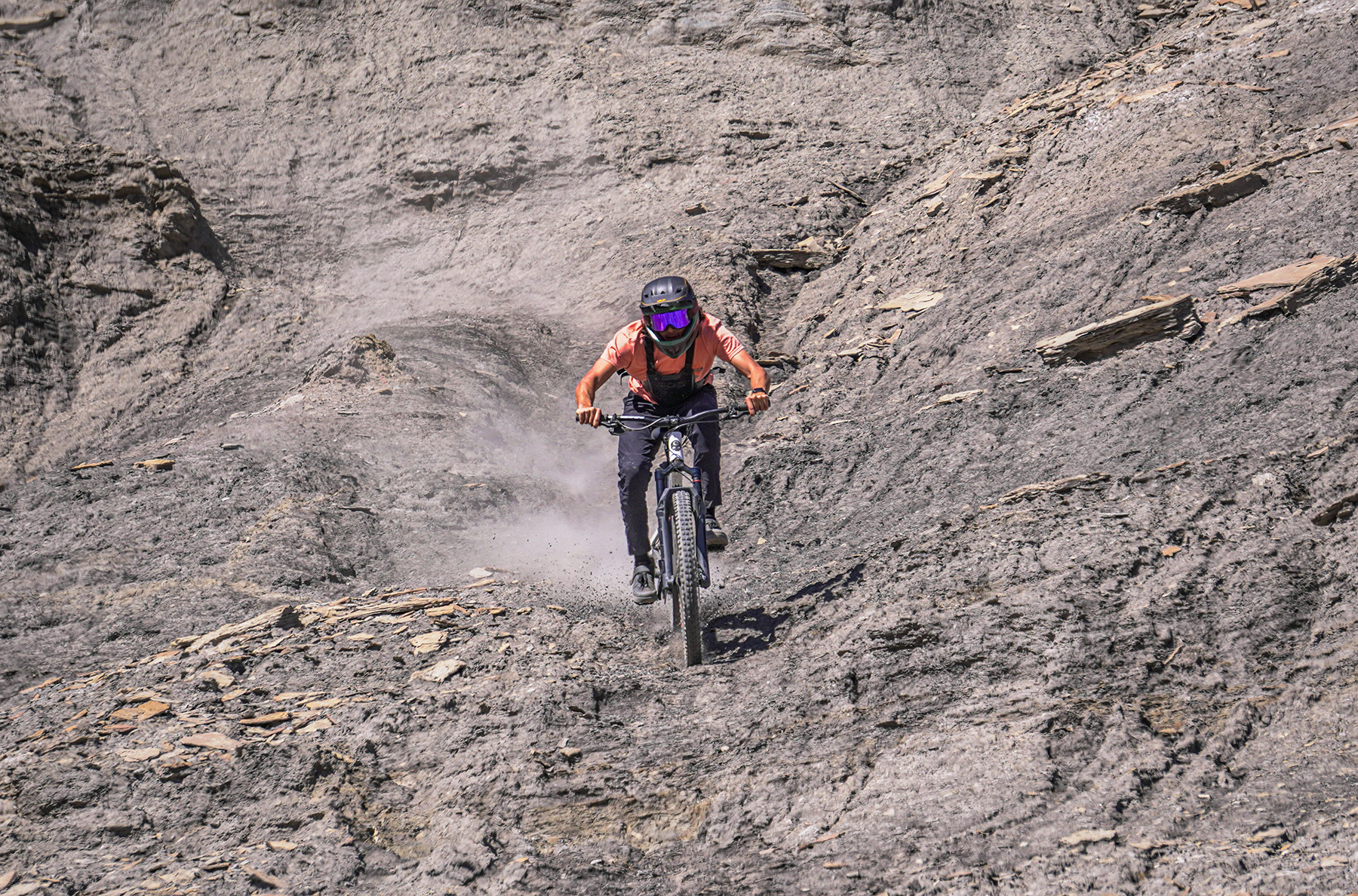

Some long-travel bikes — mostly those oriented toward Enduro racing, such as the Pivot Firebird — require a lot of speed and input to come alive, but the One.2 feels mostly happy to jib along at relatively low speeds, too. So long as you have some pitch and a little speed, the One.2 feels comfortable on anything from blue flow trails at the bike park to ultra-technical backcountry trails. In trade, it doesn’t keep its speed as well through harsh G-outs and can’t generate as much speed by pumping over terrain as most Enduro race bikes. But it strikes me as a great choice for folks looking for a more Freeride-oriented feel that offers better cushioning on big drops and jumps and a more playful feel overall.
David: Yup, I totally agree with Dylan here. The One.2 Super Enduro doesn’t feel like a bike that’s super intent on going flat out everywhere. Rather, it’s a lot of fun if you want a long-travel bike that’s more nimble, poppy, and playful feeling than a lot of modern Enduro and DH bikes — many of which have gotten more oriented toward just going fast in recent years, at the expense of feeling as fun and lively at lower speeds. That’s not to say that you can’t go fast on the One.2 by any stretch, or that it doesn’t feel good doing it. It’s still pretty composed at speed on steep, rough trails, it just isn’t as precise in its handling and doesn’t require as aggressive a touch to come alive as a lot of the more race-focused Enduro bikes — see the Comparisons section, below, for more on that.
Overall, I think the One.2’s suspension feels outstanding — it’s super supple off the top with a ton of traction and grip, without feeling wallowy or unsupportive when you start hitting things harder, all while still having impressive pop when jumping and trying to get airborne. To me, that’s one of the biggest things that sets the One.2 apart — it’s a long-travel bike that can mow down fast, rough trails quite effectively, but feels less demanding of being ridden aggressively at all times than a lot of the more stable, composed Enduro bikes out there.
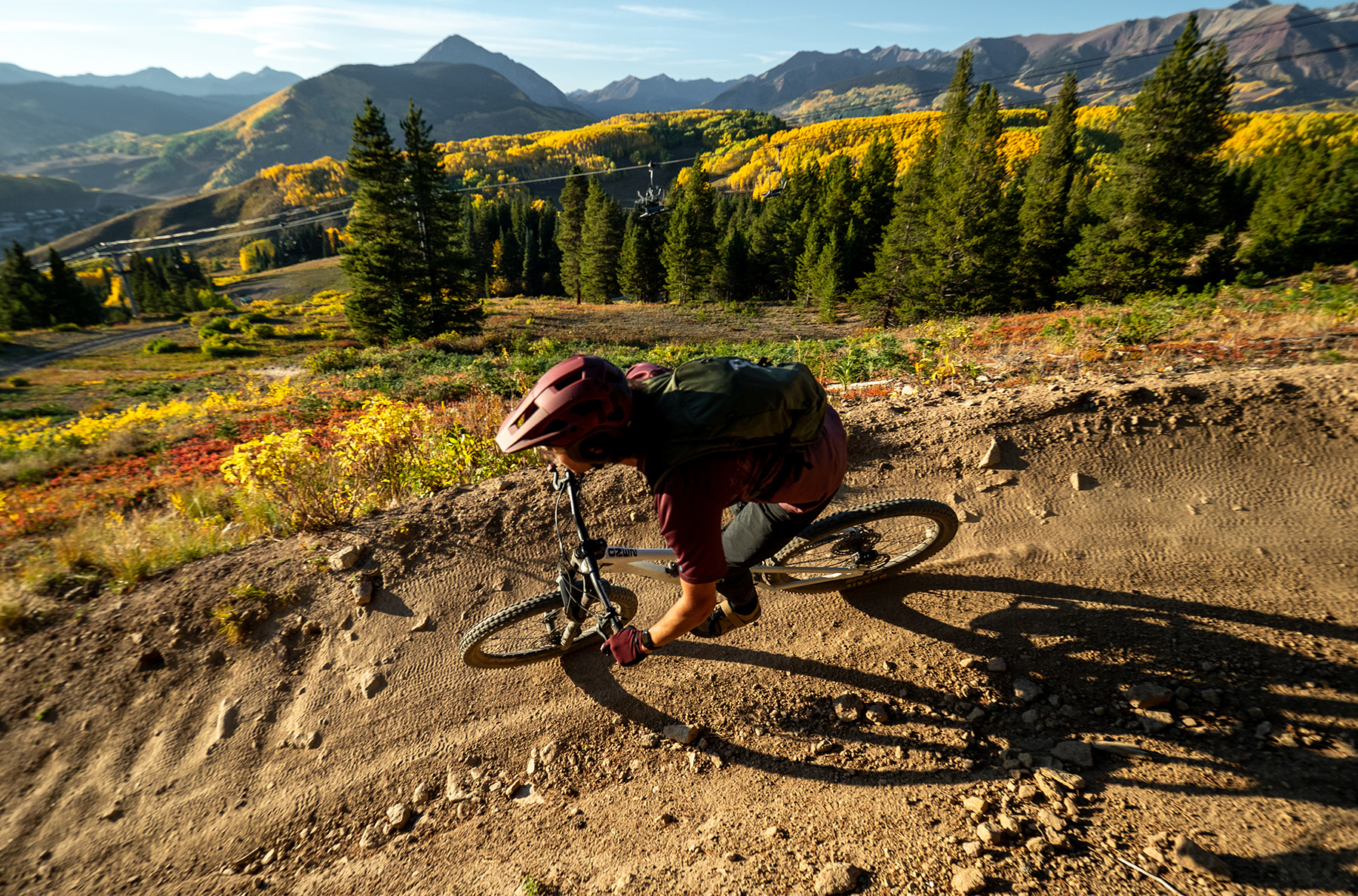
That said, I wouldn’t call the One.2 Super Enduro versatile, exactly — or at least it isn’t in the sense that we normally use the term. It’s not very engaging on more rolling trails that lack the consistent and substantial pitch to let the bike run, and it does need a bit of speed to come alive. But provided that you’re sending it down stuff that’s steep enough to get (and keep) the One.2 rolling, it is impressively versatile in that it can be pushed quite hard without demanding that you do so. Plus, it’s more lively and fun to throw around on flowier jump lines than most bikes that also carry speed through rough terrain as well as it does.
The Build
Dylan: I found the One.2 Super Enduro’s lone build kit to be mostly cohesive and pretty good value overall. The RockShox ZEB Ultimate fork feels great — all 190 mm of it — and also provided plenty of adjustability for folks who really like to fiddle with their settings. The Super Deluxe Ultimate Coil rear shock was also a great pairing. I think it contributed nicely to the traction-rich feeling of the One.2, all while not feeling very dead or boring, which coils sometimes can.
The Magura MT5 brakes were another great pairing, and it was my first time using them. They were very powerful, which is necessary for the terrain that the One.2 Super Enduro begs to be brought into, but they also provided a lot of modulation that gave a sense of control on all kinds of trails. Another first for me was the TRP TR12 drivetrain, which I quickly became a fan of. Shifting was always crisp and precise, and I utilized the adjustable clutch tension to always keep the chain tension feeling just right.
I do have a couple of complaints. First, I wish they stocked a longer dropper post on the Large. 200 mm would be great for how low the seat tube is on this bike. Second, putting EXO tires on this bike is a joke, and I was very grateful that David swapped them out for some Maxxis rubber with Double Down casings.


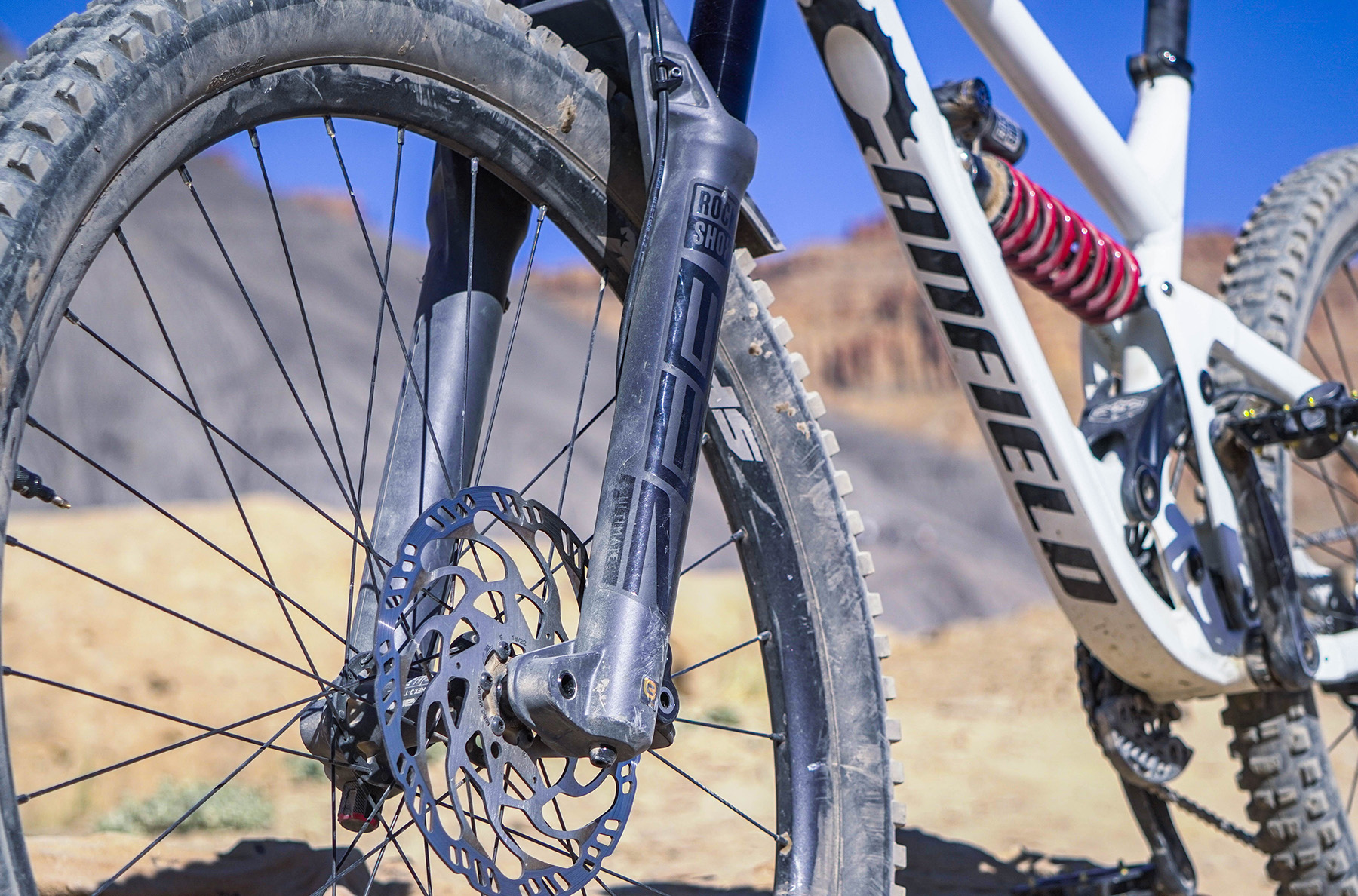
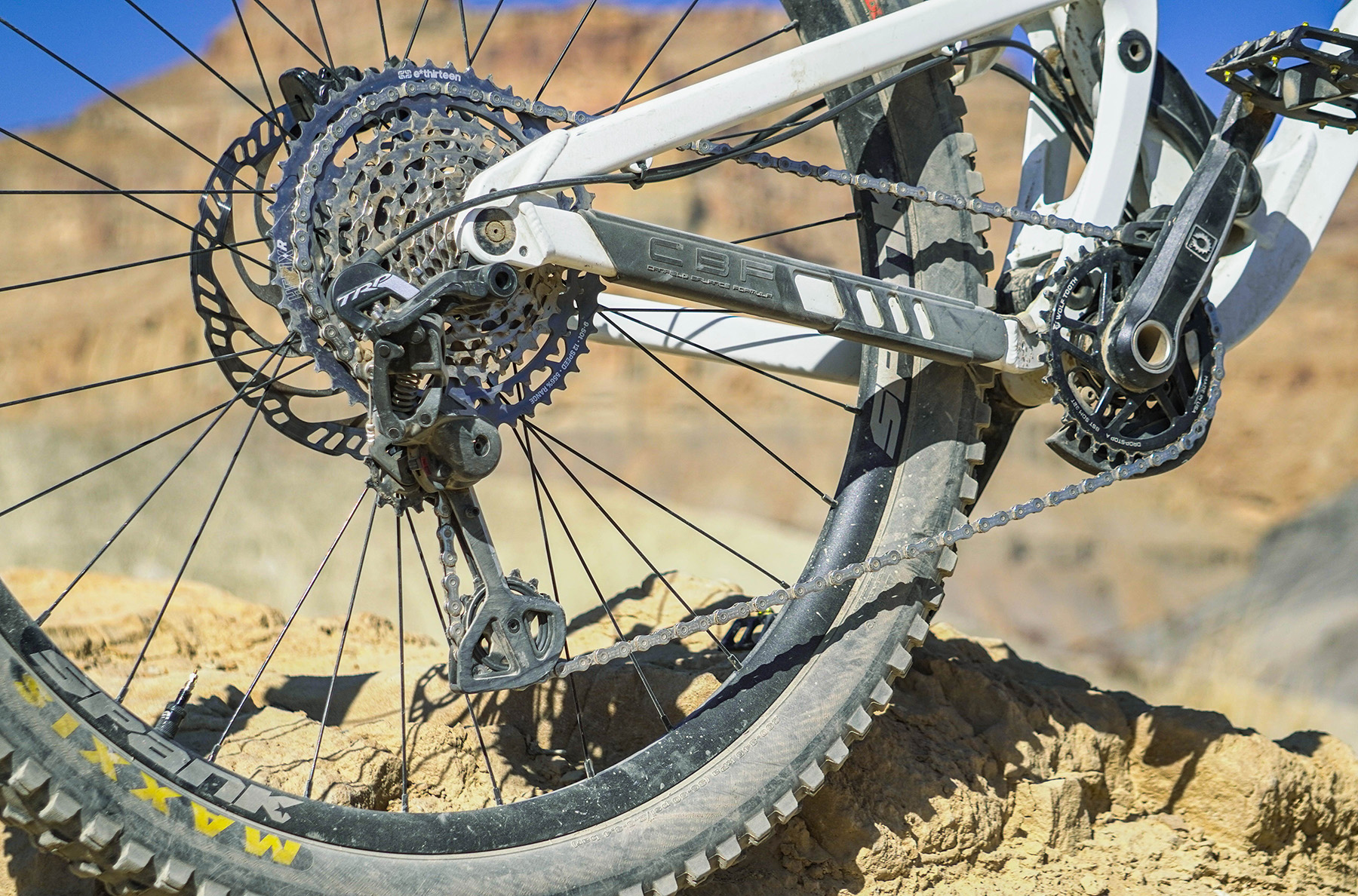
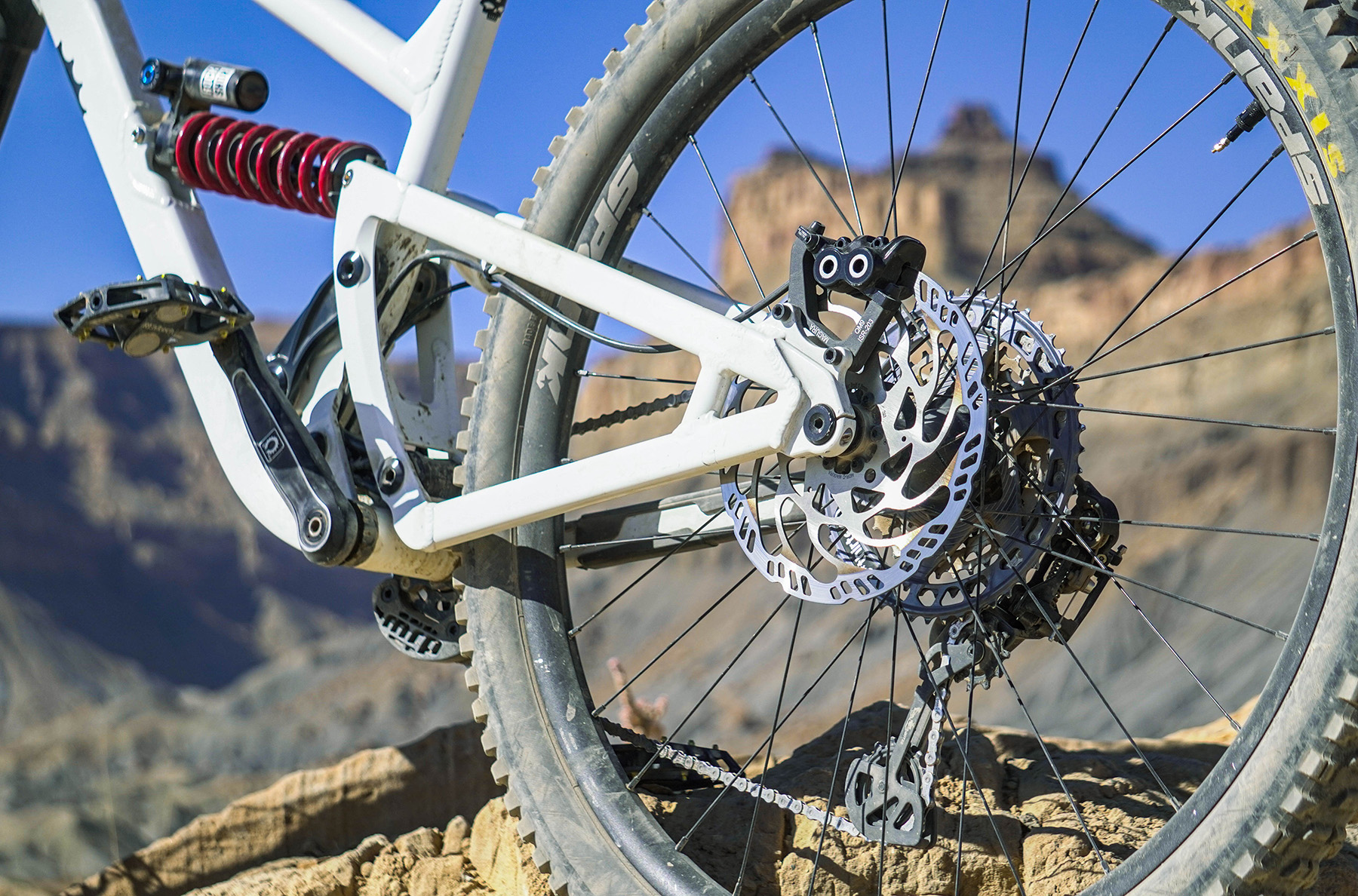
David: Agreed all around. The RockShox ZEB / Super Deluxe Coil suspension package works great. The Magura MT5 brakes are overall a very good option for the price, though they aren’t the easiest to bleed or keep aligned and 100% rub free (see the notes on the MT7 in our MTB Brake Shootout). And while I didn’t have the best experience with the TRP TR12 drivetrain when I reviewed it a few years back, it worked fine on the One.2. I think the fact that Canfield spec’d a full chainguide helped — I’d struggled with chain retention without one on some other bikes but had no such issues here.
As Dylan noted, I promptly swapped out the stock Exo casing tires for beefier options. I understand wanting to save weight on a bike that is meant to be pedaled uphill, but those lightweight casings were no match for the downhill capabilities of the One.2, and would not have been long for this world had I left them on. That’s an easy fix, though, and everything else about the build was solid.
Comparisons
Canfield One.2 DH/Freeride
Dylan: The two versions of this frame feel — unsurprisingly — quite similar. They essentially share the same geometry, so handling is almost identical. The dedicated DH One.2 feels slightly more plush and cushy, with that extra 10 mm of travel being noticeable, as well as the extra stiffness afforded by a dual-crown fork. Folks who don’t see the need to pedal a One.2 uphill, or those who already have an Enduro bike in the quiver, should go for the dedicated DH version, while those looking to get a bike to cover both DH and aggressive Enduro-style riding are best off with the One.2 Super Enduro.
Dylan: The Jedi is designed more as a DH race bike (rather than a Freeride bike) and on trail, that feels obvious. The Jedi, with its high-pivot suspension, smooths out rough terrain even more effectively, though it does take a little more speed and input to come alive. The One.2 feels more playful and maneuverable, and more forgiving overall. If you like going fast and straight and potentially racing the clock, the Jedi is the better bike, while the One.2 is the more playful option, feeling more at home on jumps, drops, berms, etc.
David: Yup. The One.2 would be a killer park bike for folks who spend a lot of time on jump lines and want something more lively and playful, while the Jedi feels like a much more focused DH race bike.
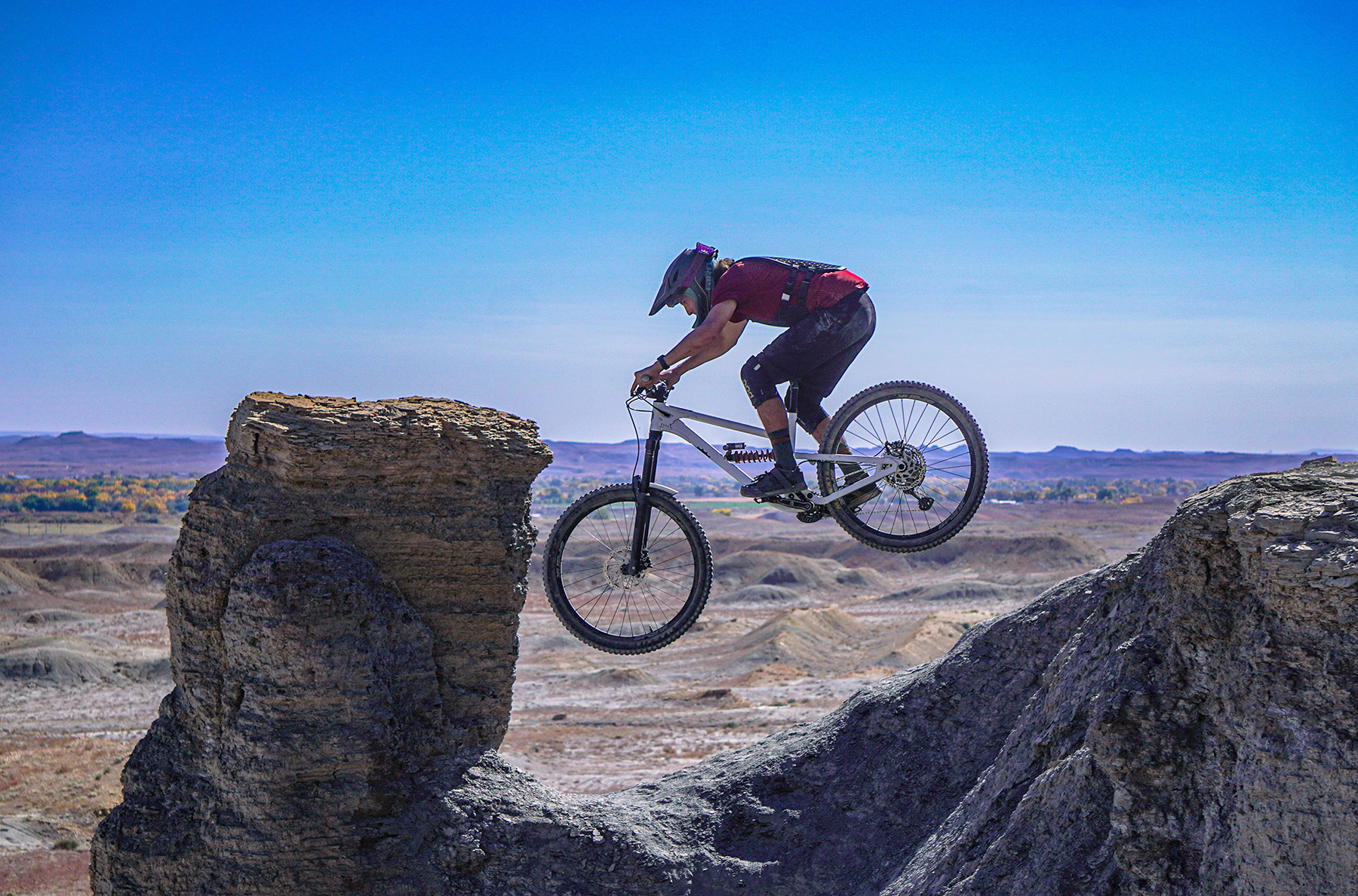
Dylan: These two bikes do feel similar, though they vary in a few key ways. The Lithium is more efficient and a better climber overall, and also feels stiffer and more precise on the way down. It’s certainly more practical on a wider variety of trails, but on the flip side, it just can’t beat the One.2 when it comes to smoothing out rough trails. The One.2 is more plush, forgiving, and playful, and also doesn’t require as forward and aggressive of a riding position as the Lithium. So, I would go with the Lithium if you want a more traditional Enduro bike (or a long-travel Trail bike), while the One.2 is the better option for riding lots of bike park, and taking a more freeride-focused approach to trails.
Dylan: These two pedalable bikes are very capable on the downhill, though they go about it in different ways. The Range is more race-inspired, offers better composure in rough terrain, and feels more stable at high speeds. The One.2 Super Enduro is more playful, happier to take it easy, and more maneuverable. Despite having more travel on tap, the One.2 is probably the more efficient climber, though the Range’s geometry, with its steeper effective seat tube angle, feels better suited to steep slogs in the saddle.
Dylan: The Megatower is a far more conventional Enduro bike. The One.2 offers a bit more forgiveness for big landings and harsh hits, while the Megatower feels more efficient overall. The Megatower is a much better climber, and feels more reasonable in mellow terrain. The One.2 is more plush and forgiving overall, and handles bike park chatter more effectively.
Dylan: The story here is very similar to the Megatower above, with the Tracer being a more conventional Enduro bike and the One.2 being a long-legged Freeride rig. The Tracer is the better climber and functions better as a do-it-all Enduro bike, while the One.2 offers a smoother ride downhill, at the expense of some responsiveness.
Dylan: Yet another story of a bike that’s more conventional and oriented toward Enduro racing. However, the Spire’s DH-bike-like geometry makes it a good option for folks who appreciate an uphill-pedalable bike with very aggressive geo but want something more responsive and efficient.

David: And another — the Slash also feels more game-on and focused on going fast than the One.2, but isn’t as easy to throw around in the air and otherwise ride more playfully. The Slash pedals more efficiently, carries speed through really rough terrain better, and actually feels more stable at speed, but isn’t as much fun to jump and use as more of a Freeride bike.
David: Way different. The SB160 is more lively, more focused on going fast all the time, and more precise in its handling at speed. The One.2 is more plush and cushy feeling in terms of its suspension performance, feels much more forgiving of being ridden less precisely, and is generally a more playful, Freeride-oriented sort of bike.
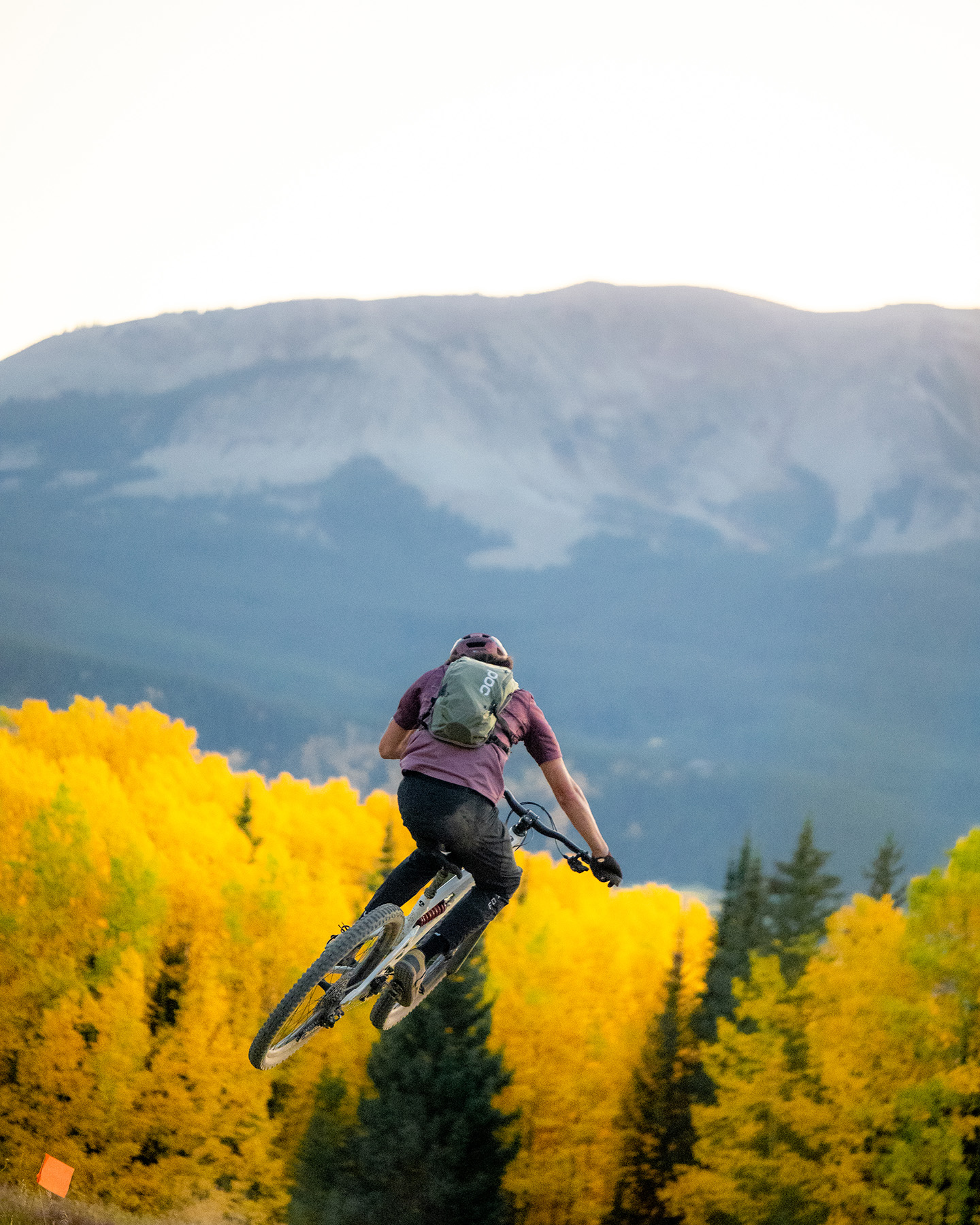
David: These two aren’t that similar — the One.2 is just way more bike, overall. But if you squint hard enough, the Tyee does start to resemble a much shorter-travel, more nimble version of the One.2. What I mean by that is that they’re both long-ish-travel bikes that feel quite plush and forgiving in terms of their suspension performance and are both on the more playful end of the spectrum, as opposed to feeling focused on going super fast all the time. The Tyee is lighter, more lively, and pedals more efficiently, but can’t match the level of composure that the One.2’s suspension offers on bigger landings and compressions — pretty much what you’d expect, given their differences in travel.
David: Like the Tyee, the Nomad is quite a bit “less” bike overall than the One.2 — more efficient under power, less stable at speed, more engaging at lower speeds, etc. That said, the Nomad kind of splits the difference between the more Freeride-oriented bikes here, such as the One.2, and the more game-on Enduro race ones in terms of its character. The Nomad feels sharper handling and more precise than the One.2 when you really start trying to go fast on steep, natural trails, but feels more easygoing than models like the SB160 the rest of the time.
Who’s It For?
Dylan: Folks who like a playful platform and bottomless-feeling suspension design in their long-travel bikes. If you spend a lot of time at the bike park, seek out the chunkiest and most demanding descents, and need something that can pedal to the top of those descents, the One.2 Super Enduro is a great option. Sure, it is not as efficient as a true Enduro race bike, but it feels smoother and more at home in the bike park. And it’s also really impressive how similar to a true DH bike the One.2 Super Enduro feels, making it a good option to serve as both a DH and Enduro bike in someone’s bike quiver.
Bottom Line
The Canfield One.2 was originally conceived as the more playful, Freeride-oriented DH bike in Canfield’s lineup, but in the newer Super Enduro guise, it’s a viable long-travel bike for folks who want to earn their turns, too. A steeper seat tube angle would probably improve its climbing performance, but the One.2 pedals surprisingly well, given its copious travel and DH-bike origins. If its combination of traits sounds like what you’re after, we haven’t been on anything else quite like it.

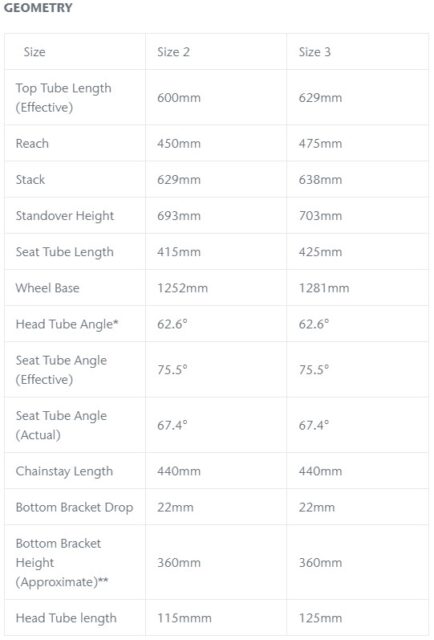


I love that you guys review bikes like this that are a little niche and off the radar. I got a One.2 frame last summer and did a similar build but with a 200mm Boxxer, 46mm offset. Axle to crown 4mm lower than the Zeb and only about a .5lb difference. I just prefer the handling characteristics of the dual crown and that solid frond end feel. I got it for park/shuttles and pedaling at certain places I ride. I agree that the seat tube angle could be steeper and since I’m almost 6’1 maybe a little longer reach but still feels good. Unfortunately, I only have a handful of rides on mine due to any injury shortly after getting it, on a different bike. What kind of settings and spring rate were you running on the Super Deluxe? At 210lbs a 450# spring gave me about 30% sag. I did use a fair amount of LSC but didn’t really have much time on the bike for a proper set up.
Really like your thorough reviews and loving the podcasts too. After listening to the Podcast with Ruben my interest for a Raaw Madonna has piqued.